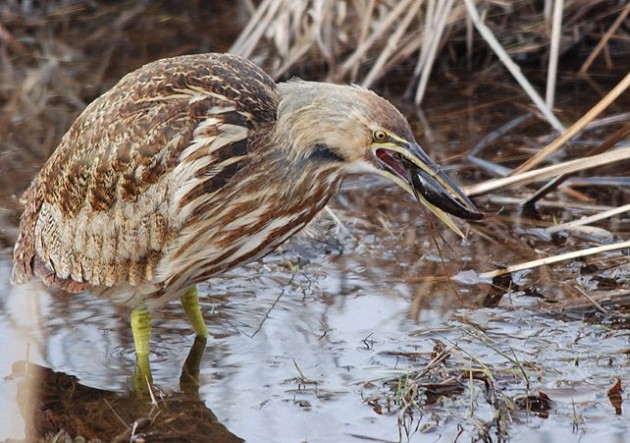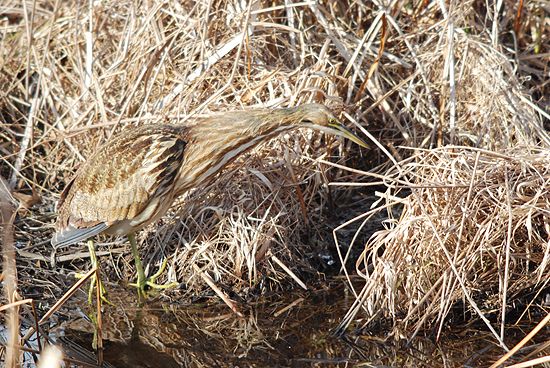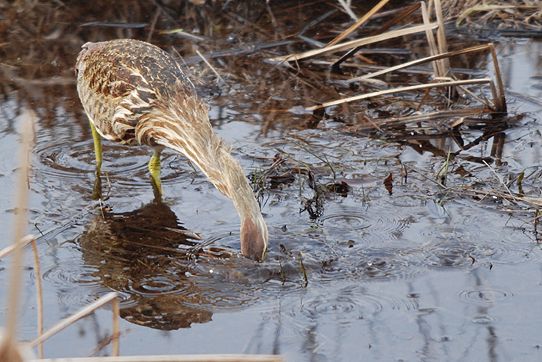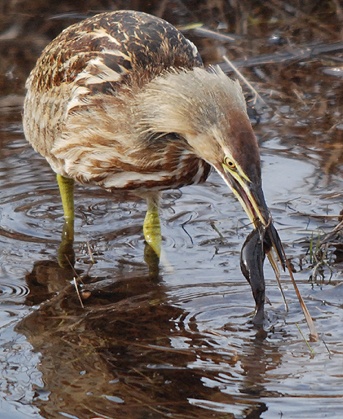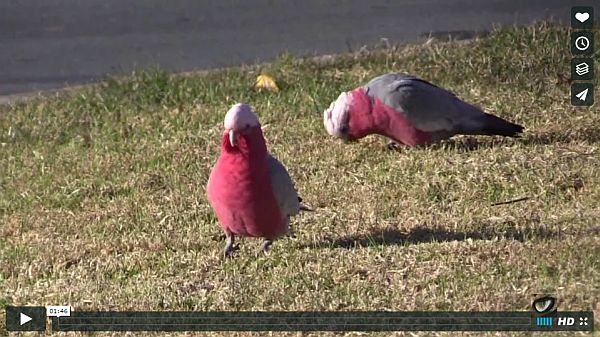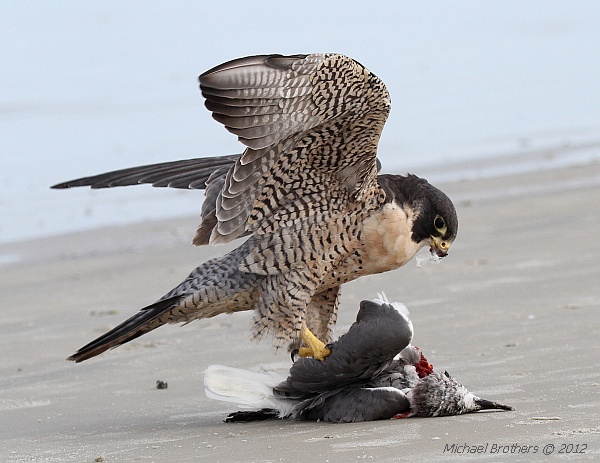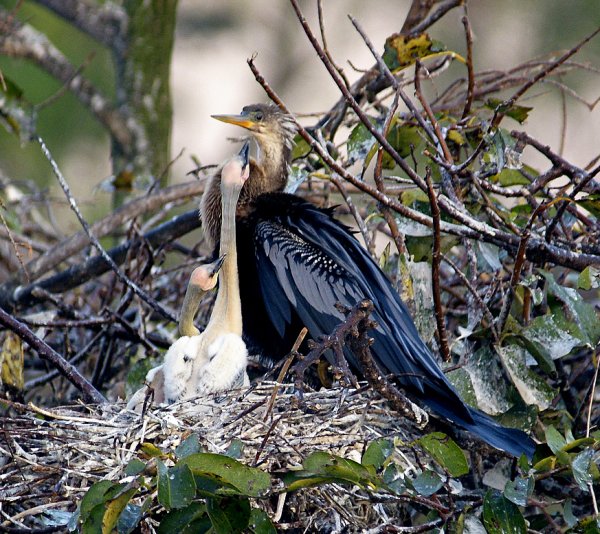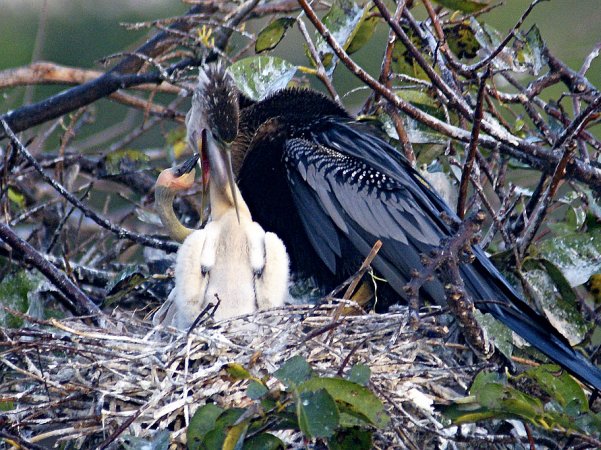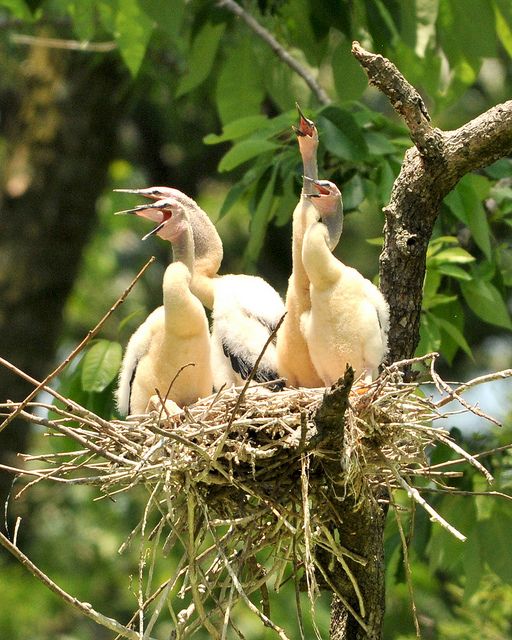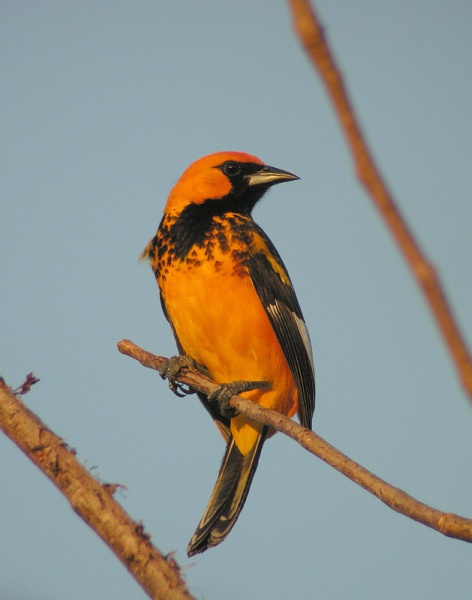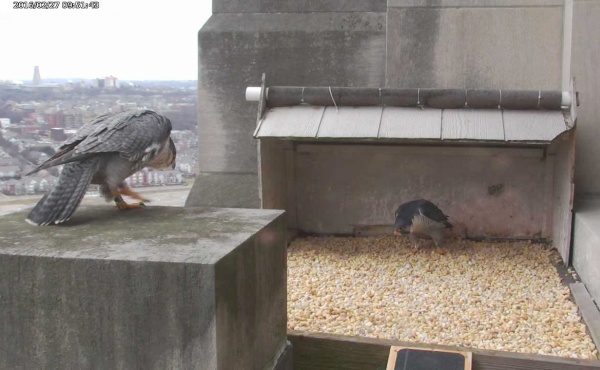
Pittsburgh Peregrine Fans are pleased as punch that Dori and Louie have taken a new and intensive interest in the Gulf Tower nest.
For the past four years they’ve flipped from site to site instead of choosing the Gulf Tower that peregrines had used continuously since 1991. In 2012 and 2013 they left Gulf for a nook on Third Avenue. In 2014 they returned, but last year (2015) they left for Macy’s Annex.
In December the PA Game Commission’s peregrine coordinator, Art McMorris, refurbished the Gulf Tower nest in hopes it would entice the peregrines back to stay. Since February 24 the signs have been very good:
- Louie and Dori both visit the nest area: The photo above shows them about to court on February 27. Click on the image for a bigger view.
- Louie calls for Dori to arrive: Amazingly, he even calls to her at night. Click here to watch him calling her at 2:00am on February 29.
- The pair courts at the scrape by bowing and “chirping” to each other. Click here to see their courtship at WildEarth.tv archives.
- Dori frequently perches near the nest or at the scrape. (The scrape is the actual nest site, a shallow depression where she’ll lay her eggs.)
- Dori has dug two scrapes and continues to enlarge them. See photos below.
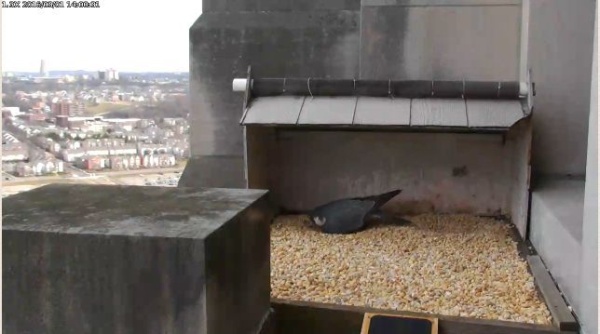
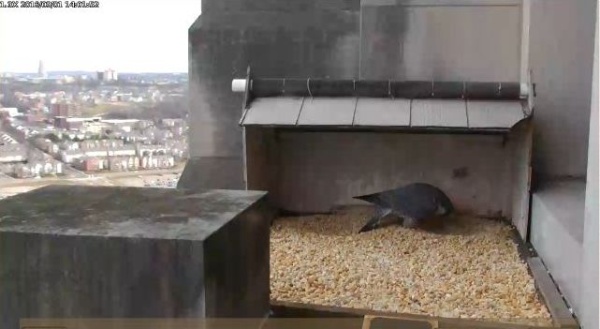
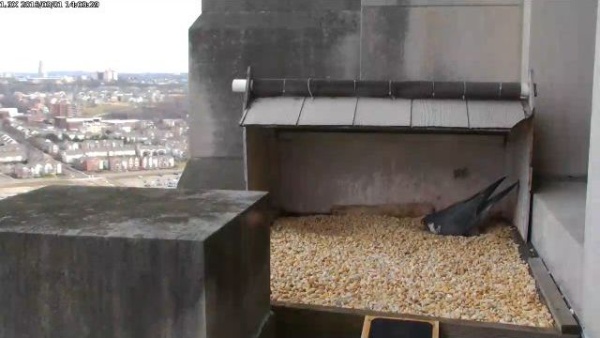
Dori is setting up housekeeping at the Gulf Tower so we’re hoping she’ll lay her eggs here this year. The real confirmation will be her first egg, due to arrive in mid to late March.
You can watch what she’s up to on the National Aviary falconcam at the Gulf Tower.
(snapshots from the National Aviary falconcam at Gulf Tower)
